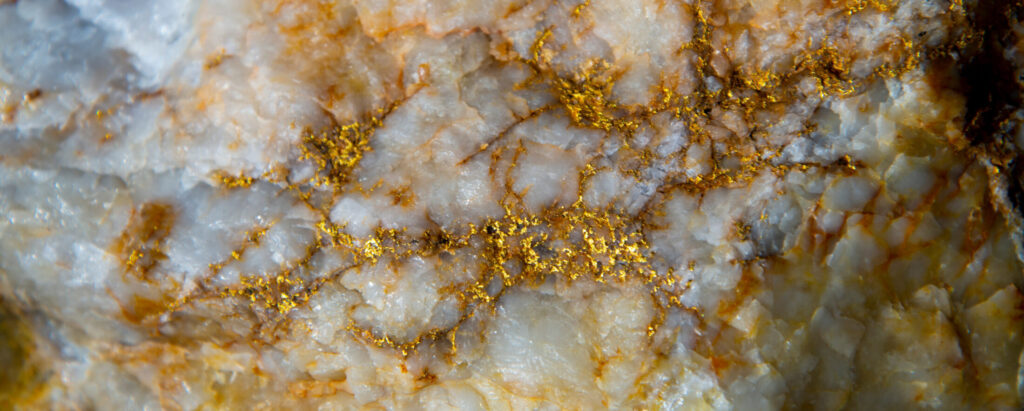
Gold is a metal that has symbolized wealth, beauty, and prosperity from ancient mythology to modern jewelry. In early human civilization, many dreamed of converting ordinary base metals into gold. This dream gave birth to alchemy, a mystical philosophy based on the idea that chemical reactions could transform one element into another. Over time, alchemy blended with early metallurgy and evolved into what we now know as modern chemistry. Yet, after centuries of experimentation, scientists ultimately concluded that creating gold in laboratories is practically impossible due to the need of extreme and highly unconventional conditions. So where, exactly, did the gold in Earth’s crust and core come from?
To answer that question, we must journey deep into space, into the moments when a massive star, also called supergiant, is taking its final breaths.
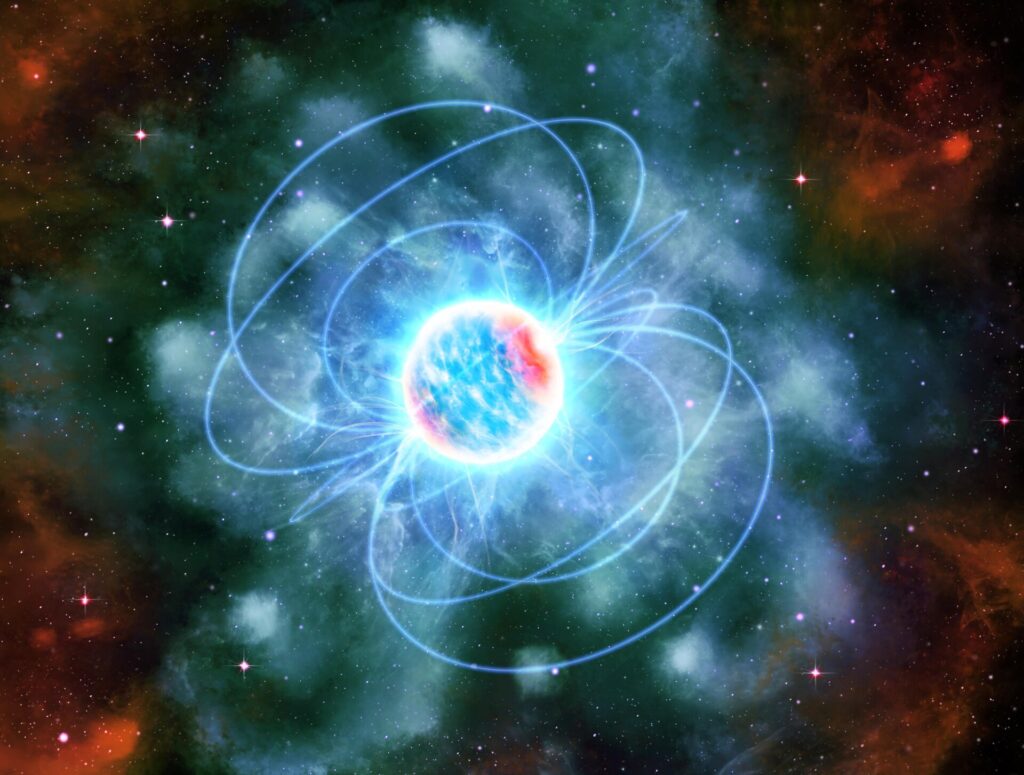
A neutron star forms when a supergiant star exhausts its nuclear fuel and can no longer sustain the fusion reactions that counter the act of gravity. Without that opposing force, the star collapses under its own immense weight. During this collapse, the matter is squeezed into an incredibly dense core, so dense that a single teaspoon of neutron star material would weigh billions of tons on Earth. Among these powerful remnants, is a particularly intense type of neutron star known as a magnetar. Recent research suggests that magnetars may be one of the birthplaces of gold and other heavy metals.
A magnetar is a neutron star with a magnetic field trillions of times stronger than Earth’s, ranging from 10⁹ to 10¹⁵ gauss. These extreme fields are remnants of the magnetic force of the parent supergiant star, now compressed into a much smaller volume. The decay of a magnetar’s magnetic field produces high-energy electromagnetic radiation, such as X-rays and gamma rays. During the early stages of its formation, this intense field helps fuse protons and electrons into neutrons. Occasionally, starquakes fracture the crust of the magnetar, just like earthquakes, and release enormous bursts of energy. These conditions set the stage for a rare and powerful atomic event, the r-process
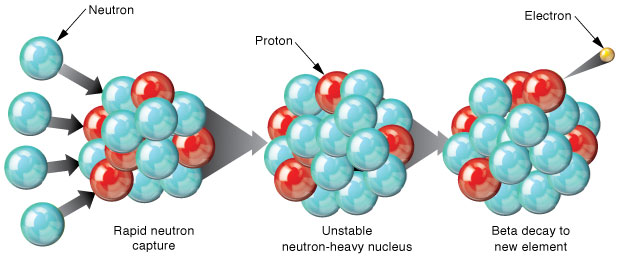
Under normal conditions, atoms absorb a neutron or two and become heavier elements. But in the extreme environment of a magnetar where neutron cloud density and gamma radiations are extremely high, lighter elements can rapidly absorb many neutrons at once. This chain of reactions, known as the r-process (or rapid neutron capture process), initiates a sequence of radioactive decays that transform lighter elements into heavy metals such as gold, platinum, and uranium.
These magnetars eject matter through stellar explosions or magnetic flares. Now, these newly formed heavy elements are scattered across space. Over the passage of time, they become part of dust and gas clouds that condense into planets like our own. This is how Earth supposedly acquired the gold found deep in its crust. While kilonovae, the collisions of two neutron stars, are currently considered the primary source of heavy element formation, magnetars are emerging as a new and intriguing possibility.
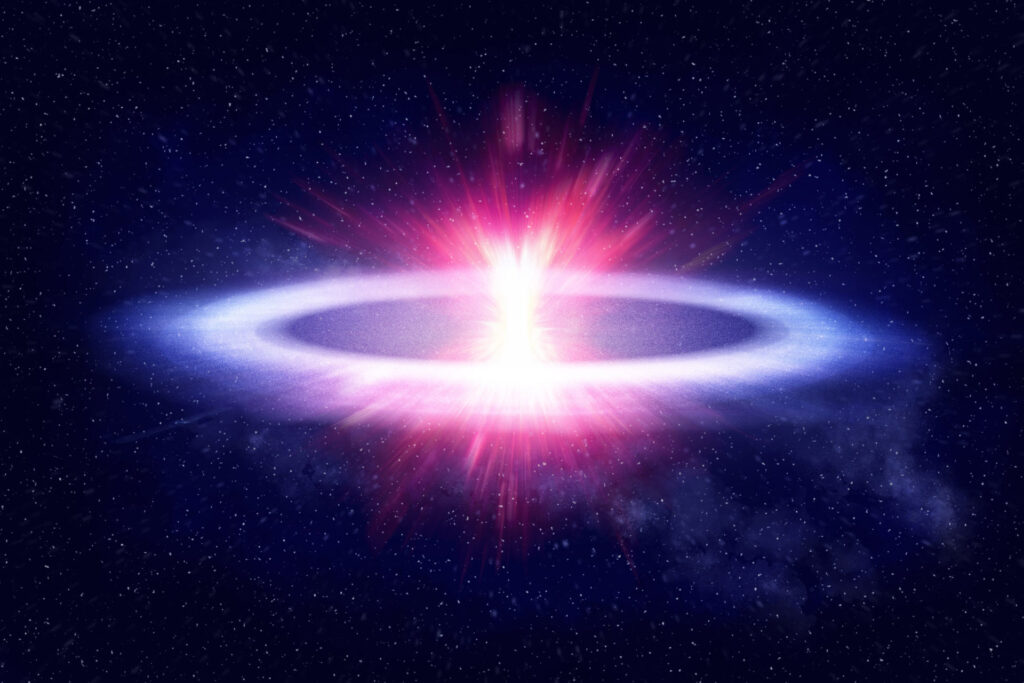
After this hypothesis emerged, scientists began wondering that if magnetars can create heavy metals, why hadn’t the signals been noticed earlier? The answer lies in electromagnetic signatures. The formation of heavy metals produces distinctive electromagnetic wave pattern, especially in the visible and ultraviolet spectrum. These emissions should, in theory, have been detectable only if scientists had known what to look for. This curiosity led researchers back to gamma-ray data from December 2004, recorded by ESA’s INTEGRAL mission (International Gamma-Ray Astrophysics Laboratory), a collaboration that included NASA.
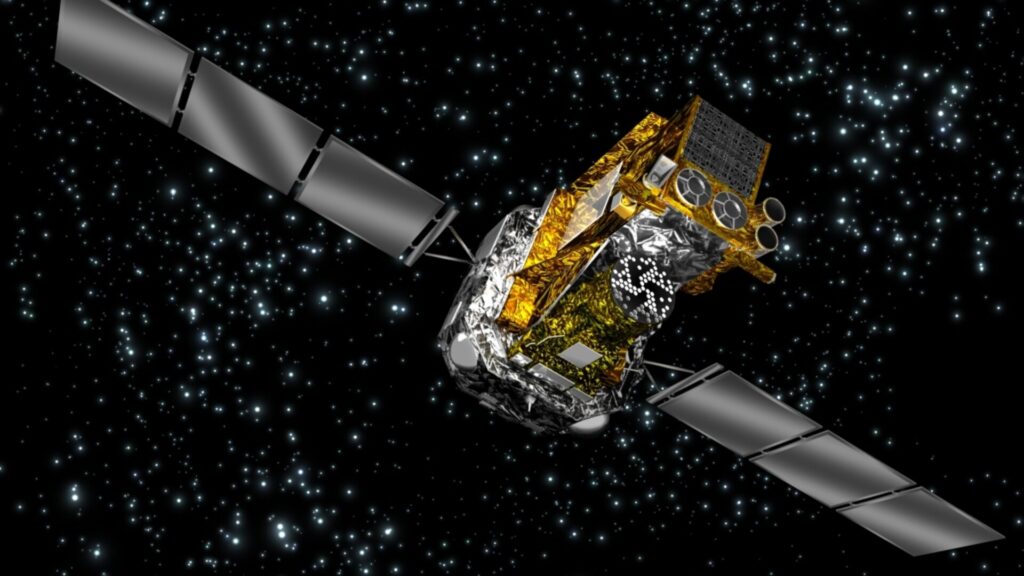
Upon reanalyzing the data, astrophysicist Eric Burns and his team at Louisiana State University discovered something interesting, a previously overlooked weak signal. And it matched the theoretical electromagnetic wave print of heavy metal formation inside a magnetar. This signal coincided with a major magnetar flare and added weight to the theory that gold may be born in these stellar furnaces.
This revelation seems to have set pavement for further discoveries on what else these furnaces could synthesize. In 2027, NASA’s COSI mission (Compton Spectrometer and Imager) is scheduled to launch. This space-based observatory is designed to study energy related events in universe including magnetar flares, gamma-ray bursts, and supernova explosions. One of its goals is to further test whether magnetars contribute to the cosmic abundance of heavy metals like gold.
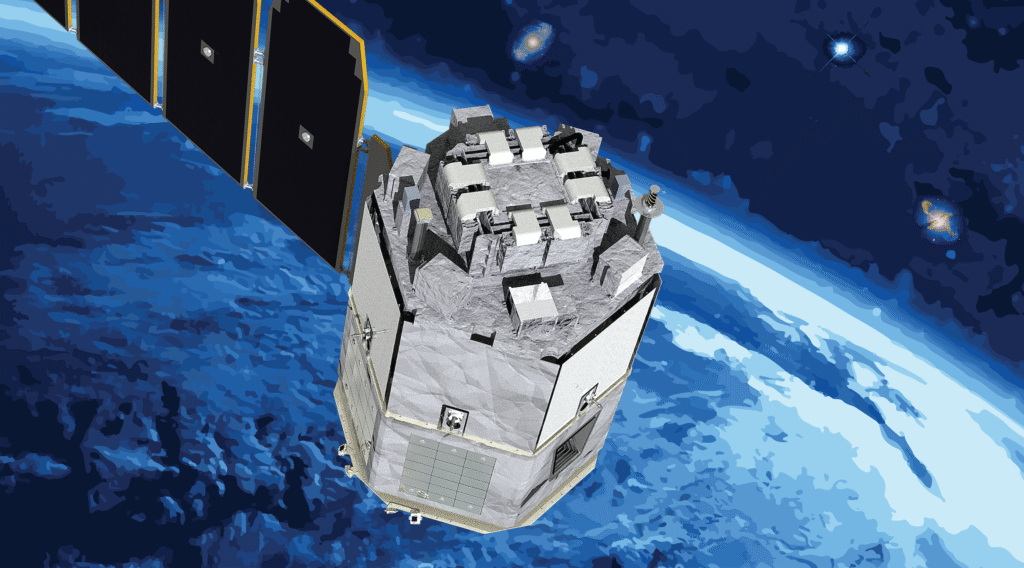
It is fascinating to think that the metal we are wearing as jewelry and found in our cellphones has been on a voyage of light years before finally reaching Earth and settling down in form of ores. Stars, even after death, have a way to keep on glittering and shining.

Leave a Reply